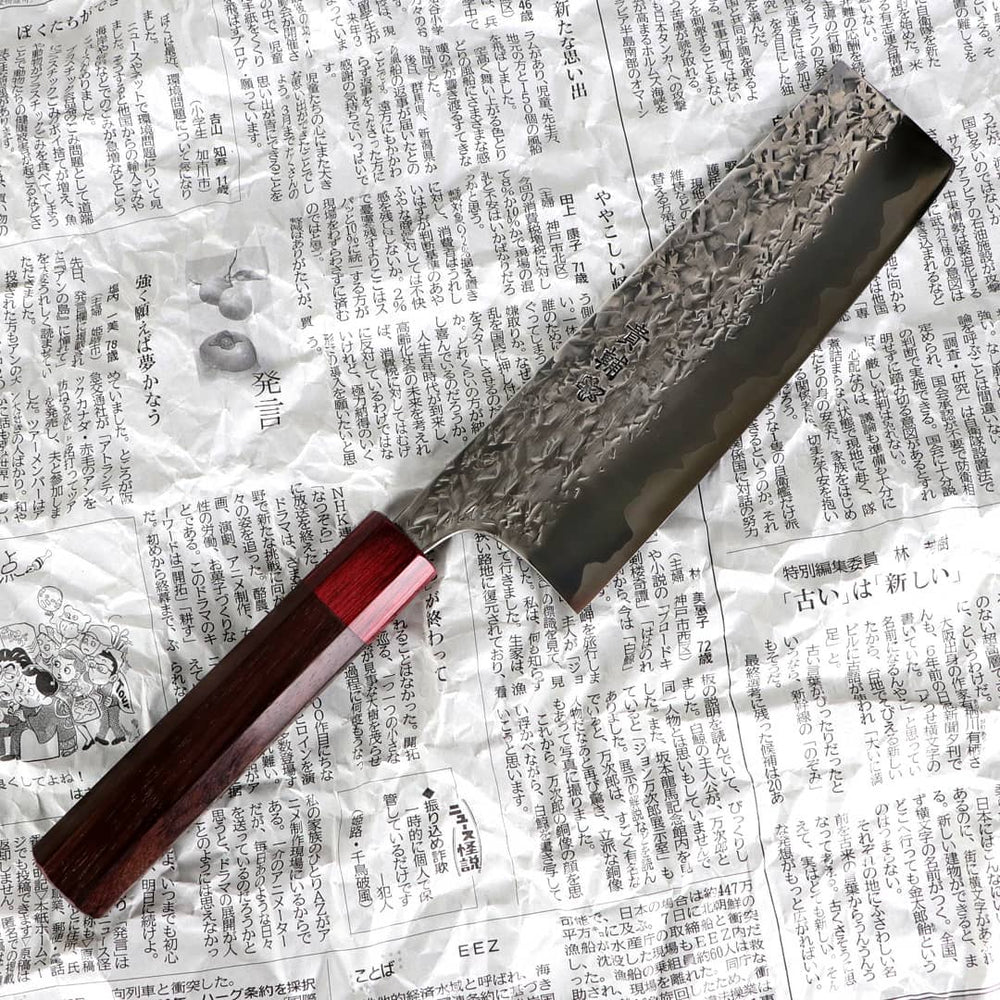Knife sharpening
Japanese knife sharpening
How to sharpen a Japanese knife?
Japanese chef's knives should always be sharpened with a water whetstone.
When selecting a water stone, two characteristics are critical. The first is the grain size, and the second is the bond structure. The larger the grains, the more abrasion can be achieved on your knife. The higher the bond hardness, the lower the material abrasion on the water stone. For coarse grinding work on high-quality Japanese kitchen knives, grit sizes of JIS 700-2000 are ideal. For polishing and final grinding, grit sizes of JIS 3000 - 10000 are recommended. For the conversion from FEPA to JIS you can use the table below. As a rule, two grinding stones are sufficient for normal maintenance. If a stone is needed to grind out broken blades, a grit size of approx. JIS 220 can be used.


Grinding stone geometry
Your whetstone should always be flat when you resharpen your knives. Over time, your waterstone can wear and the effect of hollow grinding occurs. The surface becomes uneven and your knife cannot be laid flat. Depending on the bond hardness, this happens sooner or later. You can easily remedy this by placing a second water stone on top to even out the unevenness. Since Japanese waterstones are usually made with low bond hardness, this is the most convenient solution. Alternatively, you can use a special sharpening stone dressing block that can restore an even surface even with high bond hardness.

Blade shapes

Double Bevel Knife Sharpening - Method 1
Your knife has a cutting angle determined by the manufacturer, which should be maintained. This is usually 12°-17°. Try to achieve this angle by holding your knife by the handle with one hand and placing the knife on the water stone flat to a cutting edge. As soon as you have found this cutting angle, fix this angle with the other hand. With this starting situation, you can now move the knife in the indicated direction of movement. Make sure that the entire length of the blade is processed in this way. Repeat this process on the second cutting side. As soon as you have ground a noticeable burr on both sides, switch to a finer grit and give your knife a fine grind. The fine grind removes the burr on both sides. With a little practice, you will quickly notice if the sharpening feels right or if the contact angle is off. Also, by listening carefully, you can determine over time if your grinding attempt is producing the desired result.

Single Bevel Knife Sharpening - Method 2
Again, the secret is to find the right cutting angle of your knife. However, this method is only used for knives with a blade ground on one side. If your knife is plated on the unsharpened side, you should not drag the knife across the entire stone. In this case, you should only grind on the edge of the stone up to the plated area, otherwise you may scratch the blade. In the first step, find the cutting angle again and place the blade flat on the water stone at the bevel angle. Fix the knife with one hand on the handle and search for the cutting angle by tilting the knife. Once you have found the cutting angle, use your other hand and place it on the blade to fix it. Now move the knife in the direction of movement and again make sure to work the entire cutting edge. As soon as you feel a ground burr again, you can turn the knife and place it on the water stone. Please use a water stone with a small grain size for this step to avoid scratching your blade. Once the burr is removed, you can test your result on a tomato or a piece of paper, for example, and repeat the described sharpening steps if necessary. As a rule of thumb, we recommend sharpening the side of the blade with the cutting angle about 9 times as often as the flat side.



